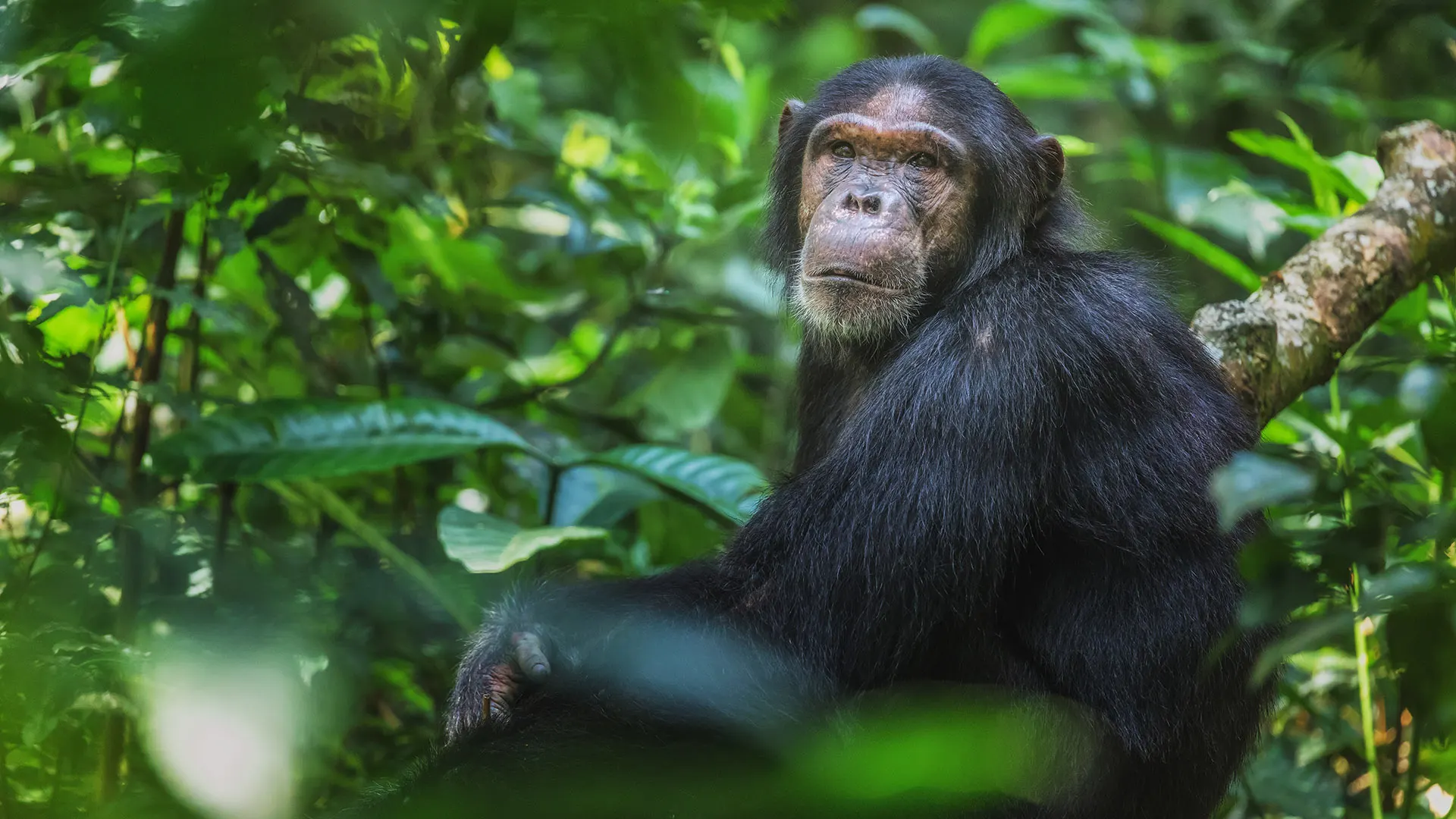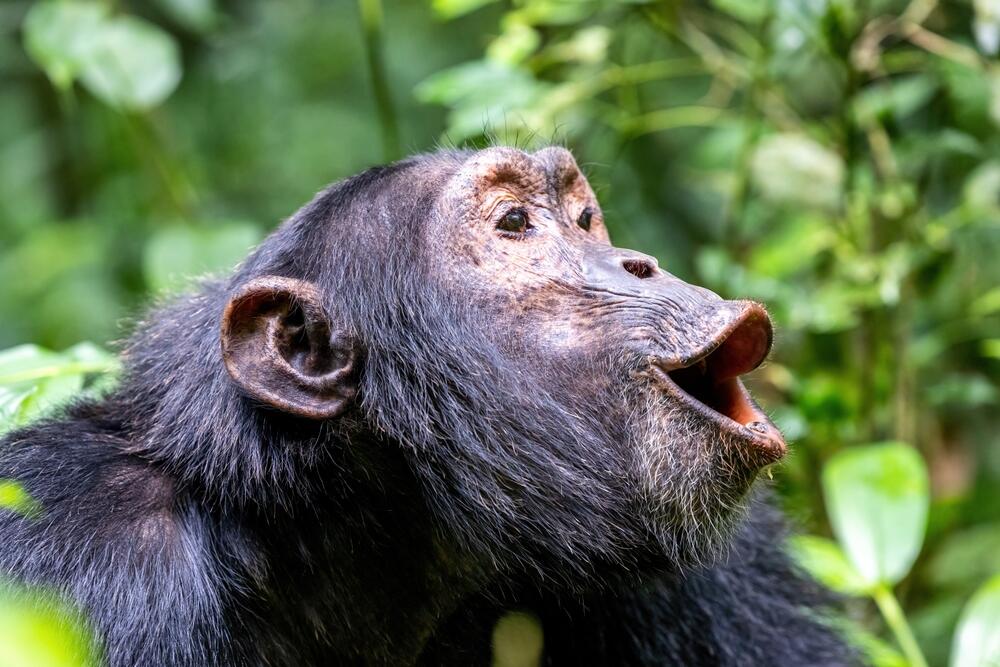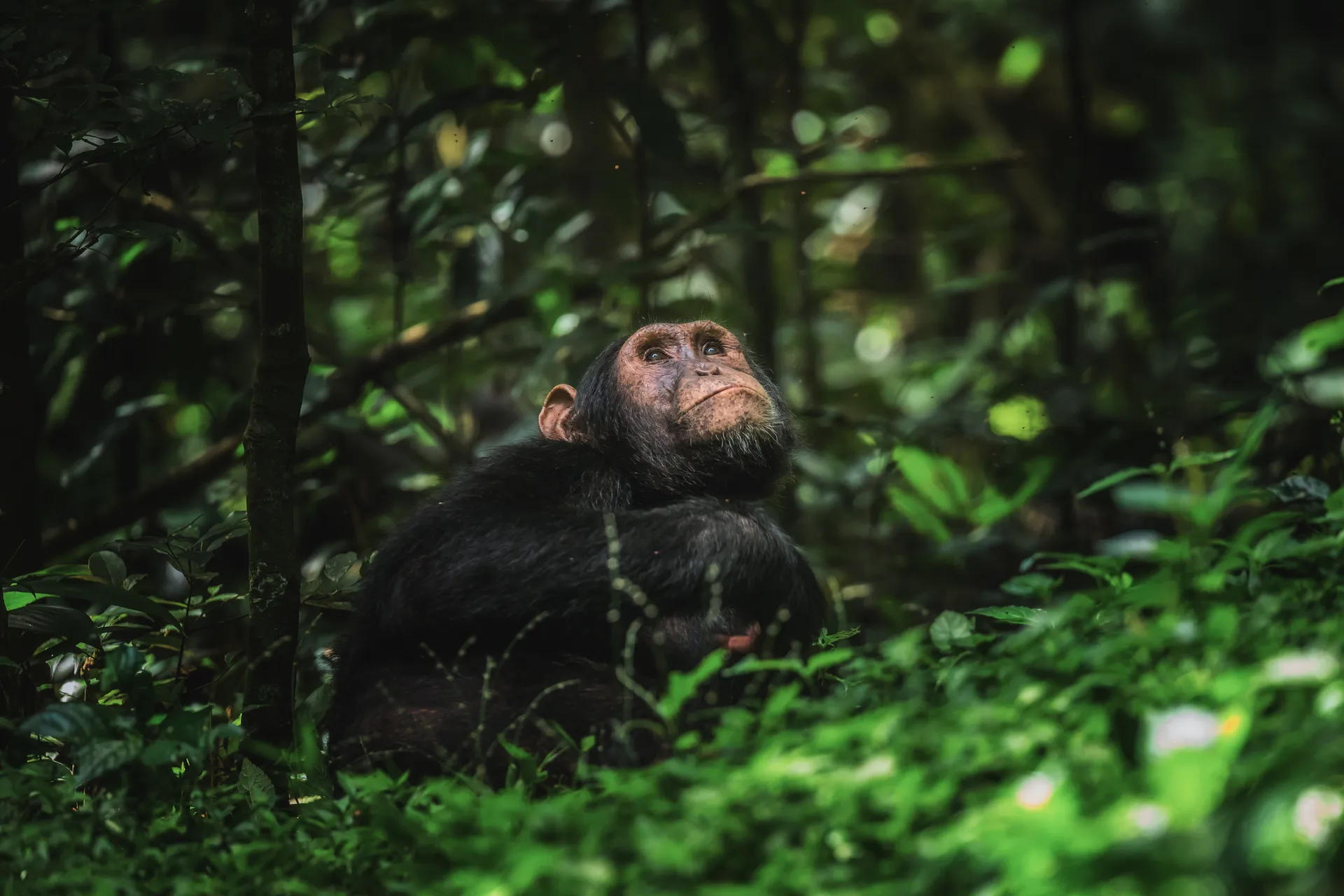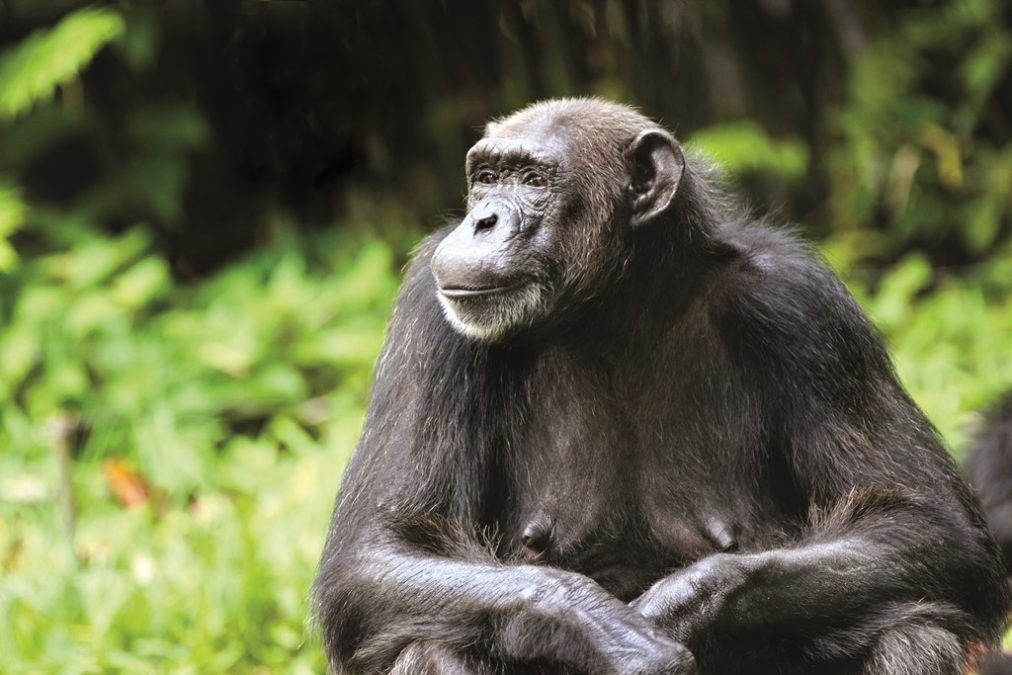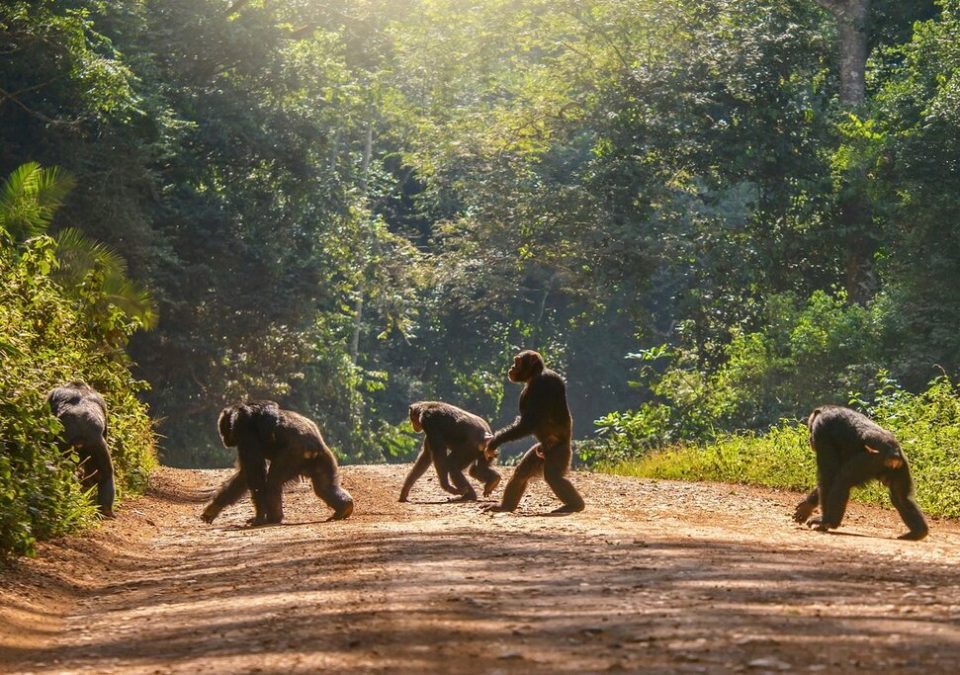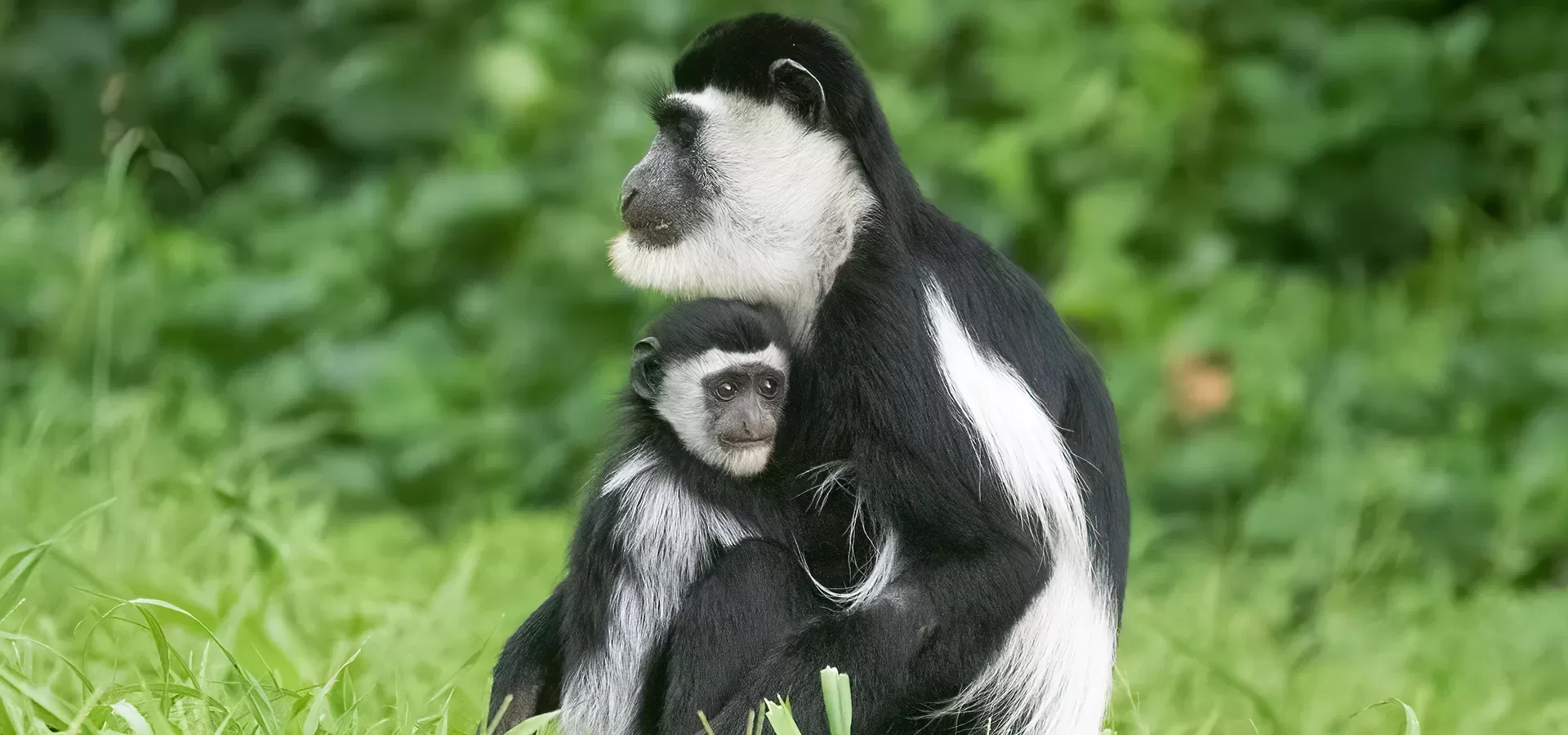A Little Bit About Kibale Forest
Kibale Forest National Park is a beautiful tropical rainforest in the western region of Uganda. Established in 1993, this vast forest park of 776 square kilometers is famous for having the greatest variety and concentration of primates in all of Africa. Kibale Forest is home to 13 primate species. The park is also a top birding destination, with a checklist of over 370 bird species. But for most visitors on Uganda safaris , the major attraction here is the opportunity to see track wild chimpanzees on foot. Kibale Forest National Park is the best destination for chimpanzee trekking in Africa.
More than 1,500 chimpanzees live here in the wild. Chimps are fascinating creatures. These forest-dwelling apes share nearly 99% of their DNA with humans, and despite their hairier coat and more stooped posture, they are recognizably human-like, both in appearance and behaviorally.
For this reason, chimpanzee trekking in Kibale Forest National Park, though less iconic, perhaps, than gorilla trekking, is one of the most thrilling wildlife experiences Africa has to offer. It is a bucket-list experience, one that should be included on any wildlife safari in Uganda.
Safaris To Kibale Forest National Park
Where Is Kibale National Park Found?
Kibale Forest National Park is located in the western Uganda, close to the beautiful town of Fort Portal and Bunyaruguru Crater lakes.
The park forms a continuous forest with Queen Elizabeth National Park to the southwest. This adjoining of the parks creates a 180km wildlife corridor, in which African Elephants move freely.
The varied altitude (1,100m to 1,600m) above sea level) of the park results in different varieties of habitat, ranging from moist evergreen forest along the Fort Portal plateau, then through the dry tropical forest and then to the woodland and savanna along the rift valley floor.
Kibale Forest National Park is also situated near Semuliki National Park and Rwenzori Mountains National Park. On the fringes of the park, is the famous community-run Bigodi Wetland Sanctuary, which is also home to a variety of birds and primates.
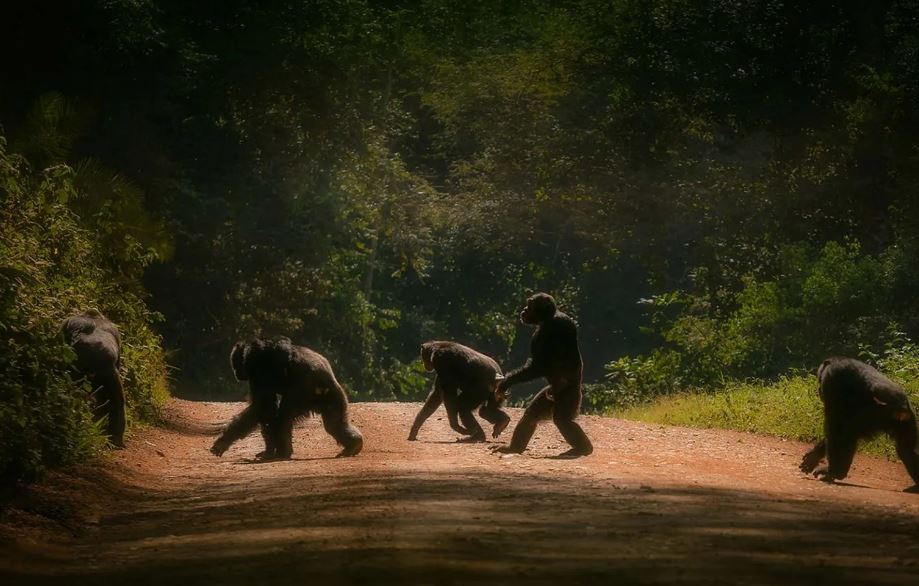
how to get to Kibale national park?
By Road
The quickest route to Kibale Forest National Park from Kampala city is through the Kampala-Fort Portal highway. The park can be reached over a fully-tarmacked road for a distance of about 300km (5 to 6 hours). For tourists overnighting in Fort portal city, the park is only an hour’s drive away.
Kibale can also be reached from the south via Lyantonde and Ibanda (392km), Mbarara and Ibanda (405km), and Mbarara, Kasese, and Fort Portal (525km) taking around 6-7 hours.All of these routes allow a break in Lake Mburo National Park while the long Kasese route also encourages a night in Queen Elizabeth National Park.
By Air
You can also access Kibale Forest National Park from the Kasese airstrip, a 68 kilometers (2 hours) drive on surfaced and dirt roads. This airstrip can be reached using chartered aircraft from Entebbe International Airport or Kajjansi airfield near Kampala city.
Activities In Kibale Forest National Park
Kibale Forest National Park offers the ultimate chance to spot chimpanzees in their natural habitat. Nowhere in the world can such large groups of chimpanzees be found in one place. Through chimpanzee tracking adventures you’ll quickly come face-to-face with these intelligent primates.
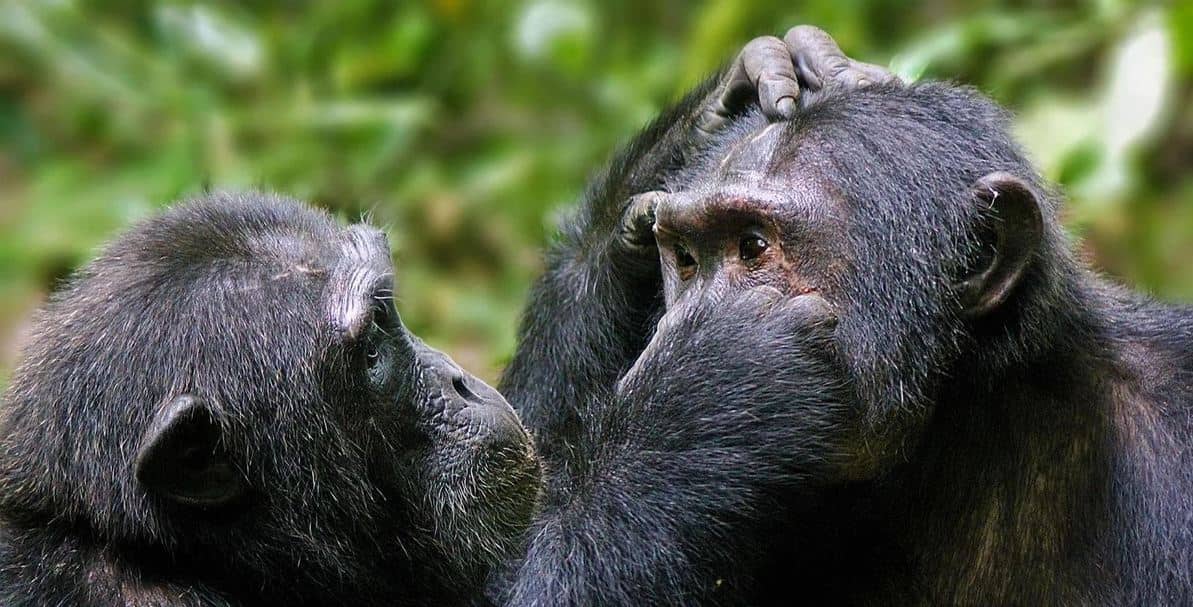
1. Chimpanzee Tracking in Kibale Forest
Chimpanzees may get less hype in the travel media than majestic gorillas. But these Great Apes have the honour (perhaps a dubious one, depending upon your perspective) of being our closest living relatives and time spent in their company is a unique wildlife experience.
Chimpanzees live in communities of about 20 to 150 individuals. Like humans, they have strong personalities, complex social intelligence, communication skills, and ability to fashion and use tools.
In Kibale Forest National Park, they live in 13 communities and 4 of them have been successfully habituated for chimpanzee trekking tours. These chimpanzees of Kibale have been tracked since 1993 and the chances of seeing them are around 95%, far greater than any other location which offers chimpanzee trekking in Rwanda, Uganda, DR Congo or Tanzania.
The Kibale National Park chimp trek can take between 2 to 4 hours, but once the chimps are located, time spent with them is strictly limited to one hour. We recommend that you book the chimpanzee tracking in advance. There are only a limited number of chimpanzees permits available per day.
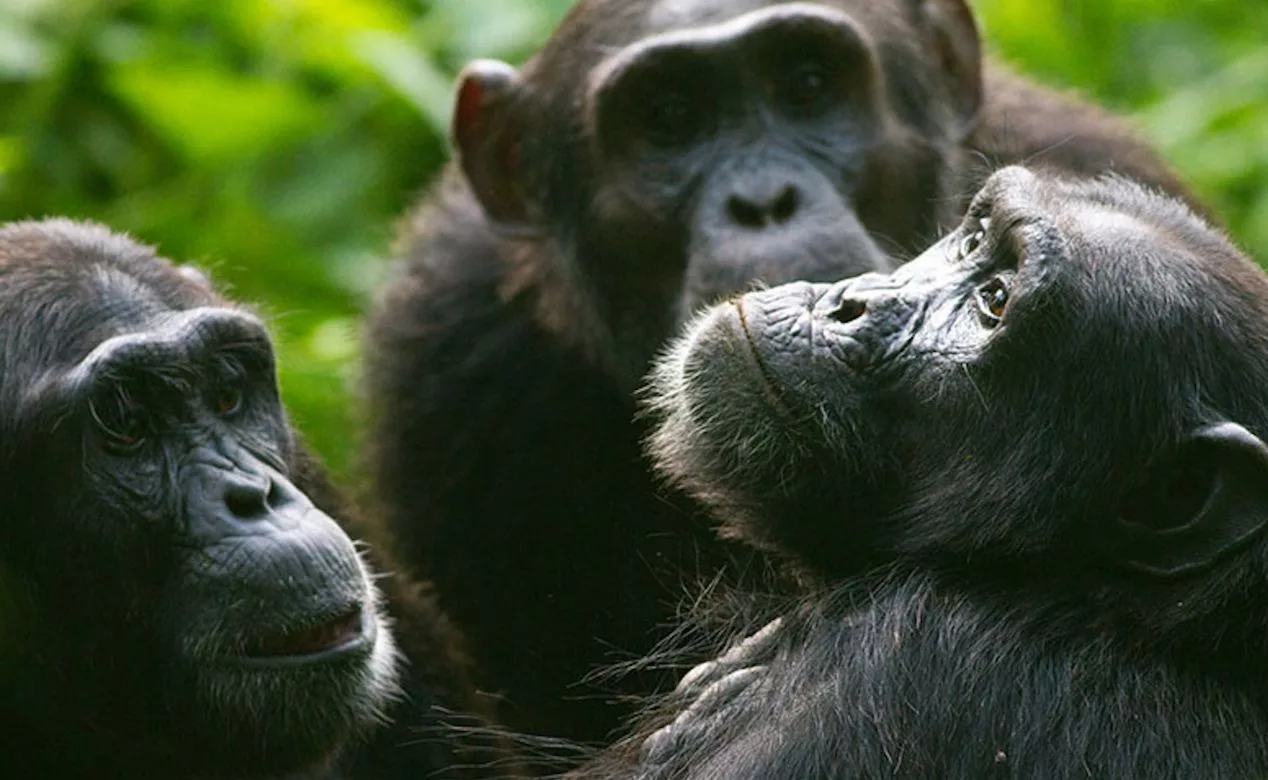
2. Chimpanzee Habituation Experience
Perhaps even more special than the standard chimpanzee tracking adventure is the Chimpanzee habituation Experience (CHEX).
You’ll have an opportunity to visit a community of chimpanzees that are not yet fully habituated and you’ll be with the chimpanzees for a large part of the day (from dawn to dusk). The Habituation Experience is led by the researchers of the Kibale National Park’s habituation team.
The goal is to gradually introduce unhabituated chimpanzees to the presence of humans, a painstaking process that can take 10 years to accomplish. It is slightly more expensive and needs much more patience than regular chimpanzee trekking. It often involves venturing further into the depths of the rainforest jungle.
But because you spend a long time in the forest, besides observing chimps, there is plenty of time to learn about these special primates, the butterfly species, the ancient rainforest and other animal species that live here. This is a special excursion for travelers who want to experience Kibale to the fullest!
3. Birding in Kibale Forest National Park
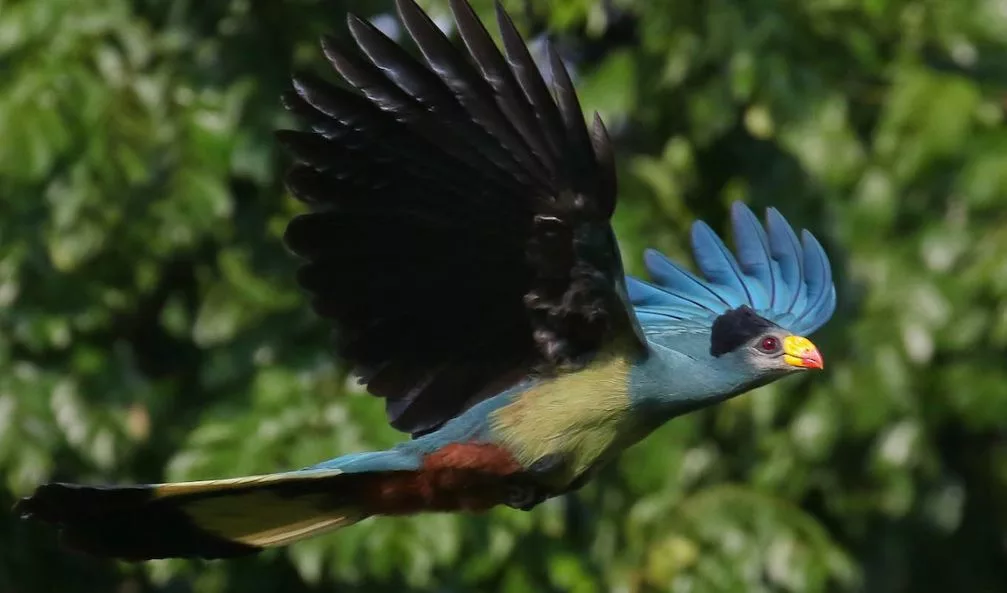
Uganda ranks high on the list of best destinations for birding in Africa.
No birding tour in Uganda would be complete without dedicating some time to scanning the thickets and canopies of Kibale Forest National Park. With habitats ranging from wet to dry forest, woodland, savanna and swamp, the Kibale has a total of 375 bird species, including 6 species that are endemic to the Albertine Rift. The most sought-after bird species in Kibale is the Green-breasted Pitta.
This enigmatic little bird is only found deep in the tropical forests of Central Africa. And despite their spectacular medley of colours, are surprisingly elusive. Few birders have had the good chance of seeing the green-breasted pitta. Other avian specials of Kibale Forest National Park include;
- African grey parrot
- African pitta
- Afep pigeon
- Abyssinian Ground Thrush
- Black-eared ground-thrush
- Olive long-tailed cuckoo
- Western tinkerbird
- Black-bellied seedcracker
- Blue-breasted kingfisher
- Black bee-eater
- Black-capped apalis
- Blue-headed sunbird
- Brown illadopsis
- Brown-chested alethe
- Red-chested owlet
- Great blue turaco
- Cassin’s spinetail
- Dusky crimsonwing
- Little greenbul
- Masked apalis
- Nahan’s francolin
- Purple-breasted sunbird
- Red-faced woodland warbler
- Ruwenzori apalis
- Scaly-breasted illadopsis
- Western nicator
- White-naped pigeon
- Yellow-rumped tinkerbird
4. Nature Walks In Kibale Forest National Park
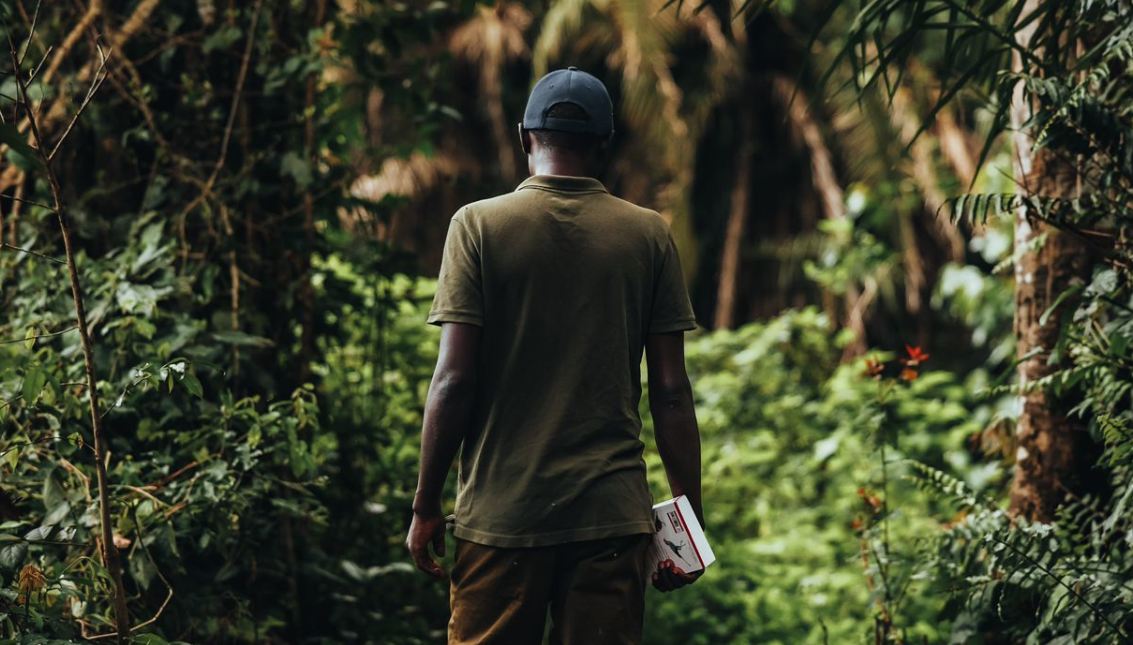
Most of the Kibale National Park is covered in evergreen rainforest. Among 300 tree species, rare hardwoods like the brown mahoganies and tiama tower above the forest floor from huge buttress roots.
Interspersed between them, fruit-laden fig trees keep the forest’s impressive primate densities well satisfied. Underneath the thick canopy, the zigzagging forest nature trails are widely recognized as some of the most picturesque in Africa, lined with a thick layer of shrubby undergrowth.
During the forest walk, you can meet several species of primates including the adorable red-tailed monkeys, Pottos, Bushbabies, Mangabeys, Baboons, Colobus, Vervet, Blue, and L’Hoest’s Monkeys. Though chimps, monkeys, and birds are certainly the more conspicuous and noisy inhabitants, the wildlife diversity of Kibale include over 70 mammal species, 250 butterfly species, plus a variety of reptiles, and amphibian families.
On the larger side of the animal spectrum, buffalos and elephants often wander into the forest from nearby Queen Elizabeth NP. These are rarely seen and dutifully avoided by the guides leading walks through the forest. Duikers, forest hogs and Bush pigs also occupy the undergrowth in the company of African golden cats and civets.
Things To Do Near Kibale National Park
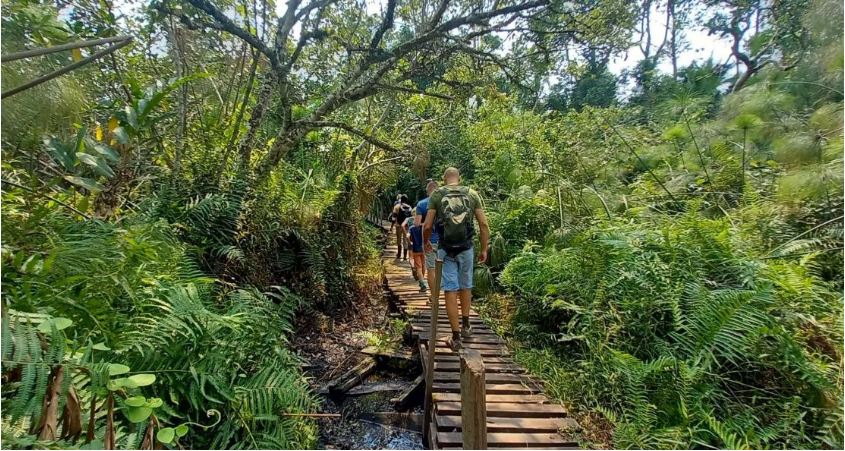
1. Nature Walk in Bigodi Wetland
On your Uganda safari tours to Kibale Forest National Park you are encouraged to visit Bigodi Wetland Sanctuary which is located about 6km from the park.
The sanctuary is an award-winning local community based tourism initiative operated by the Kibale Association for Rural and Environmental Development (KAFRED). It is aimed at protecting the local environment while advancing health, education, and economic growth in the wider local community.
Here you can take a 3-hour guided nature walk with a knowledgeable local guide. On your swamp nature walk, you will likely see several kinds of monkeys, including Black and White Colobus, Red Colobus, Red Tailed, Grey Cheeked Mangabey, Olive Baboon, L’Hoest’s, Vervet, and Blue Monkeys. The area also boasts over 200 bird species, including the colorful Great Blue Turacos.
2. Bigodi Village Walk
Beside guided Bigodi swamp walk, KAFRED offers as well excellent cultural tours through a village walks of 3 to 4 hours through Bigodi Village (“home of two tribes”).
During the village tour, you discover the Uganda rural village life accompanied by a professional English-speaking local guide. You can visit traditional healer who happily shares his knowledge about herbs, plants and local medicines. You can also visit the homes of elderly men and women who tell interesting stories about birth, marriage, ceremonies, clans and traditional rural life.
En route, you are given the chance to experience the Ugandan school system and tour Bigodi’s trading centre. With advance booking, KAFRED walks can be punctuated with a number of add-ons, including:
- Traditional meals experience.
- Dance and drama.
- Handicrafts demonstration.
- Homestead Tourism.
3. Crater Lakes and Tea Plantations Tours
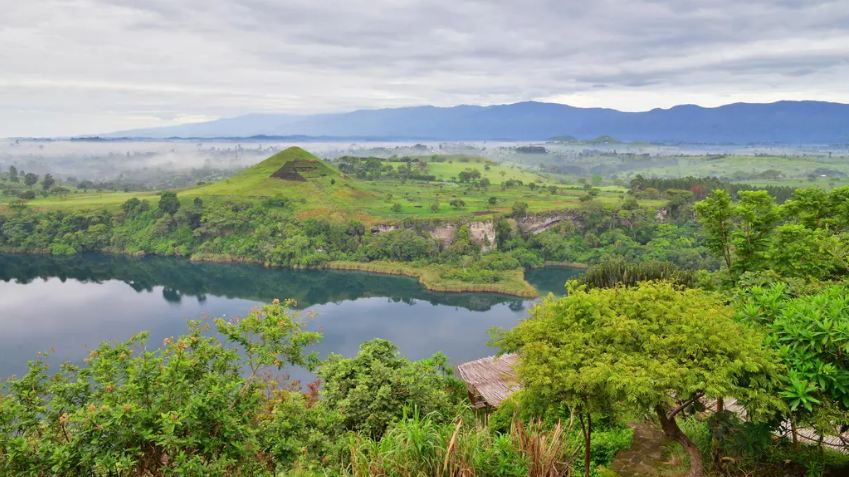
The greater Kibale Forest region is not only known for its chimpanzees, monkeys, and birds. Spectacular crater lakes – formed by volcanic activity – and fresh tea plantations on rolling hills offer a perfect backdrop for various walks, hikes, or cycling excursions. Walk through villages to the ‘top of the world’ viewpoint, see tea leaves being picked and discover the origins of the image on the 20,000 Ugandan shilling note.
4. Explore Amabere Ga Nyinamwiru Caves
Amabere Ga Nyinamwiru means “Breasts of Nyinamwiru”. The breast-like features in the cave are in fact live stalactite formations made of calcium carbonate. The white-coloured water that drips off thus called breast milk by local Toro people. These people believe that breasts in the cave belonged to Nyinamwiru, the daughter of Bukuku who was a self-enthroned King of the Bachwezi.
Nyinamwiru’s father cut off her breasts to deny her the opportunity to breast feed her baby Ndahura as the father had been alerted that the child will take over his throne.The cave is a good place to learn about the culture in this region of Uganda. From this site, you can also take a scenic hike to the top of the Nyakasura hill which offers spectacular views of three beautiful crater lakes. You can as well visit the marking of a large foot in the area believed to belong to one of the last Batembuzi dynasty people who were giants.
5. Mountain Biking
Around Kibale Forest National Park, you can cycle through various villages. During the cycling tour, you will experience local life: the people working in the various fields or in their shops, the children at the school, or the local church. Based on what you want, you can do long and shorter trips. We have prepared the mountain bikes with helmets for you.
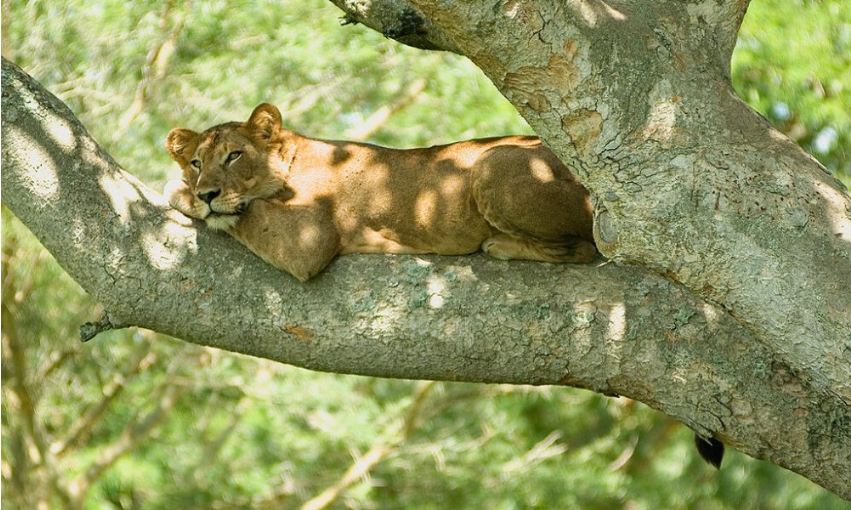
6. Game Viewing in Queen Elizabeth Park
Naturally, a safari game drive or two in the nearby Queen Elizabeth NP is a must. The park is home to over 600 bird and 95 mammal species, including the famous tree-climbing lions. Here, you can enjoy relaxing boat cruise on Kazinga Channel is home to some of Africa’s densest concentration of hippos and waterbirds. You can also explore the park’s beautiful savannah plains on morning, afternoon, evening and night game drives to see lions, leopards, elephants, buffalos, warthogs, crocodiles, a variety of antelopes, and more.
Accommodation in Kibale National Park
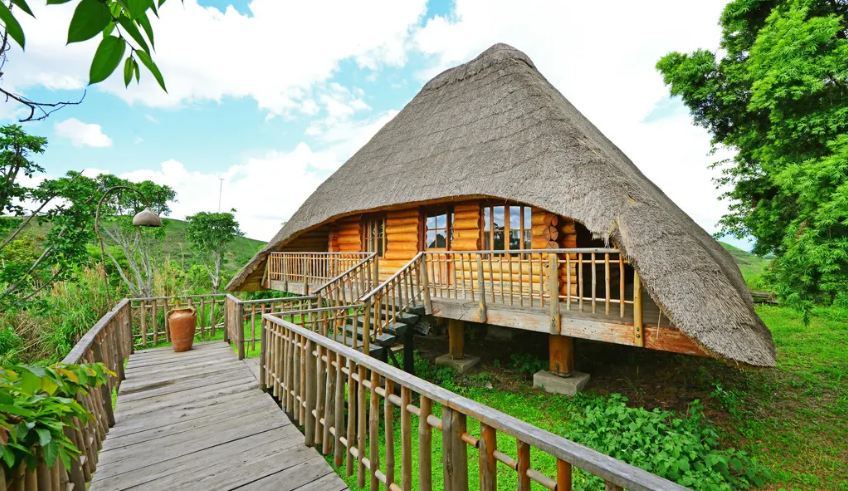
There is only two lodge inside the Kibale Forest National Park itself: Primate Lodge and Kibale Forest Camp. However, there are a variety of lodges, guest houses and tented camps on the periphery. They include budget, mid-range, and luxury Uganda safari lodges and tented camps. Here are the best places to stay at Kibale:
- Primate Lodge Kibale – Luxury
- Crater Safari Lodge – Luxury
- Kyaninga Lodge Kibale – Luxury
- Ndali Lodge – Luxury
- Papaya Lake Lodge – Luxury
- Turaco Treetops – Midrange
- Mountains of the Moon Hotel – Midrange
- Chimpanzee Forest Guest House – Midrange/Budget
- Kibale Forest Camp – Midrange/Budget
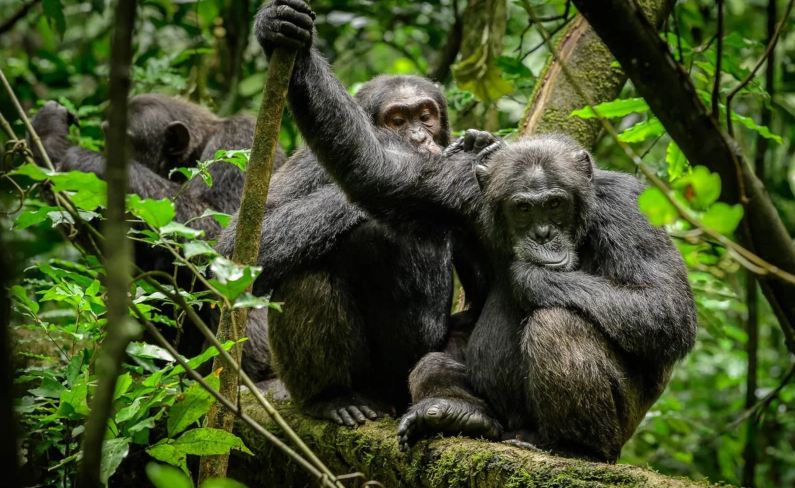
FAQs About Kibale Forest National Park
1. Is Kibale The Best Place in Uganda To Track Chimps?
Yes, Kibale Forest National Park is statistically the best place to track chimpanzees in Uganda. The habituated chimpanzee communities here are very used to people, so your chances of locating them is over 95% and the quality of sightings is usually excellent.
However, Kibale is not the most affordable place to track chimpanzees in Uganda. That distinction belongs to Budongo Forest Reserve near Murchison Falls National Park and Kalinzu Forest Reserve on the border of Queen Elizabeth National Park, which charges US$50 per person for a permit as compared to US$200 in Kibale. Although Kalinzu Forest is not as reliable for sightings as Kibale, it has a very decent success rate of around 90%. If you are on a really tight budget, it is certainly worth thinking about as a cheaper alternative.
2. How Many Days Are Recommended for Kibale Forest?
It is possible to visit Kibale on a stand-alone 2-day Kibale National Park budget safari out of Kampala or Entebbe. This is quite a rushed option, as the driving time is around 6 hours in either direction.
But it still leaves time to do the Bigodi Swamp Walk on the afternoon you arrive and a chimp trek the next morning. An advantage of a 2-day safari tour is that you only pay for 1 night’s accommodation, which helps keep costs down.
Budget and time permitting, however, we would recommend at least 3 days for a stand-alone visit to Kibale, and 4 days or longer if you also want to visit other nearby national parks like Semuliki, Rwenzori Mountains, Queen Elizabeth and Bwindi Impenetrable National Park.
3. Can I Combine Chimp Trekking in Kibale With Gorilla Trekking?
Yes, plenty Uganda safari trips combine chimpanzee trekking in Kibale National Park with gorilla trekking in Bwindi Impenetrable Forest National Park. The two national parks are about 240 kilometers apart, a distance that can be covered in approximately 6 hours. If you don’t mind things being a little rushed you can squeeze both trekking activities into a 4-day Uganda safari.
However, if possible, we would recommend 5 to 6 days for a combined gorilla and chimpanzee trekking tour. This will make for a far more relaxed safari adventure. And it allows you time along the way to visit Queen and look for lion, elephant, buffalo, hippos, antelopes, and other plains Uganda wildlife.
4. Is Chimpanzee Trekking in Kibale Forest National Park Safe?
Chimpanzee tracking in Kibale Forest National Park is widely regarded to be safe. We have never heard of a visitor being injured by a chimpanzee. Having said that, a large chimp is comparable in size to a human adult, and far stronger, so it is important to follow your guide’s instructions to ensure your safety. Children under the age of 12, being smaller and more vulnerable than adults, are not allowed to go chimp trekking in Kibale.
For reasons of both safety and comfort, it is a good idea to wear good walking or hiking shoes, long-sleeved shirt and long trousers. Tucking your trouser legs into your socks minimizes the risk of being attacked by safari ants (which are harmless but quite common and have a nasty bite) and other creepy-crawlies.
Neutral colors that blend into the bush (khaki, green, gray) are recommended, and a walking stick might be useful for navigating through tricky areas.
6. When to Visit Kibale Forest National Park?
The best time to visit this forest park is during the dry season when the trails are dry and passable. This runs from December to February and then from June to September. Kibale is, however, a tropical rain-forest, so every step should be taken in a comfortable pair of solid boots and long trousers, lest the mud, biting ants or stinging nettles detract from the adventure. All electronics and other precious belongings should also be thoroughly waterproofed.
Rain is possible at any time of year, though April, May and November tend to experience higher rainfall levels. The trails are well-maintained and suitable for most fitness levels, though those trekking chimpanzees should be prepared to walk for several hours if necessary.
Ready To Start Planning Your Trip To Kibale Forest national Park?
We hope you have found all information needed to decide that the Kibale Forest National Park in Uganda is the perfect place for your next safari adventure. Still have questions? Or maybe you would like some more specific information about the different lodges? Please contact us and we will get back to you soon!

